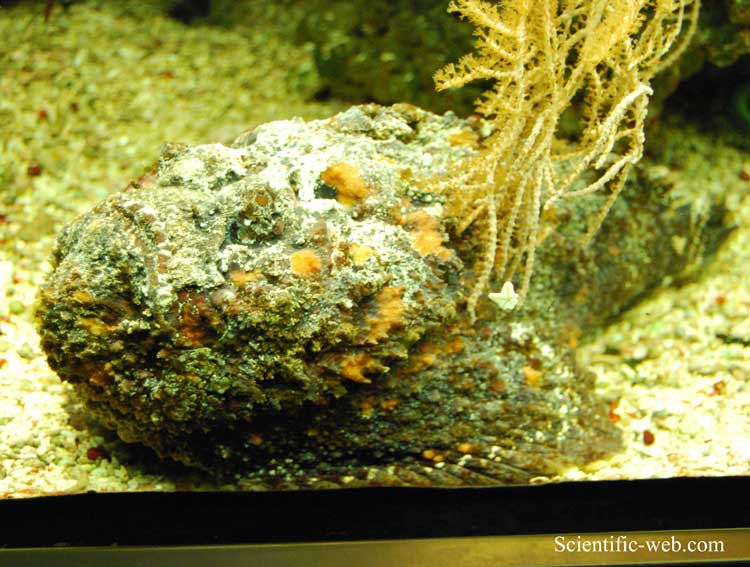Inimicus filamentosus, Photo: Michael Lahanas Superregnum: Eukaryota --------- Inimicus filamentosus, also known as the Filament-finned stinger, Barred ghoul, Two-stick stingfish, or Devil scorpionfish, is a member of the Inimicus genus of venomous fishes. It is a member of the Synanceiidae (devilfishes, goblinfishes, and stonefishes) family of the Scorpaeniformes order of ray-finned fishes. These benthic fishes are found on sandy or silty substrates of lagoon and seaward reefs, in coastal regions of tropical oceans.[1][2] Like all the other known species of Inimicus, I. filamentosus is a demersal ambush predator. They are nocturnal, and often dig themselves partially into the sandy seabed during the day. Geographic distribution Western Indian Ocean: Red Sea and East Africa to Maldives. Physical Description Adults are typically 13-25 centimeters in length, and can weigh up to 480 grams. The body color can be a dull yellow, gray, brown, or rust in color with light blotches, and very similar to that of the surrounding sandy or coral seabed in which they are found. This coloration acts as a camouflage which renders them extremely difficult to detect in their natural habitat. The skin is without scales except along the lateral line, and is covered with venomous spines and wartlike glands which give it a knobby appearance. The head is flattened, depressed and concave. The eyes, mouth and nostrils project upwards and outwards from the dorsal aspect of the head. Sexual dimorphism is not believed to occur in this species. Fin morphology: * dorsal fin: composed of 15 to 17 spines and 7 to 9 soft rays.[3]
I. filamentosus is a piscivorous ambush predator. It is nocturnal and typically lies partially buried on the sea floor or on a coral head during the day, covering itself with sand and other debris to further camouflage itself. It has no known natural predators. When disturbed by a scuba diver or a potential predator, it fans out its brilliantly colored pectoral and caudal fins as a warning. Once dug in, it is very reluctant to leave its hiding place. When it does move, it displays an unusual mechanism of subcarangiform locomotion---it crawls slowly along the seabed, employing the four lower rays (two on each side) of its pectoral fins as legs.[4][5][6][7] References 1. ^ Froese, R. and D. Pauly. Editors. 2010.FishBase. World Wide Web electronic publication. Fish Identification at FishBase, version (01/2010).Inimicus filamentosus. Accessed 23 March 2010. Source: Wikispecies, Wikipedia: All text is available under the terms of the GNU Free Documentation License |
|

